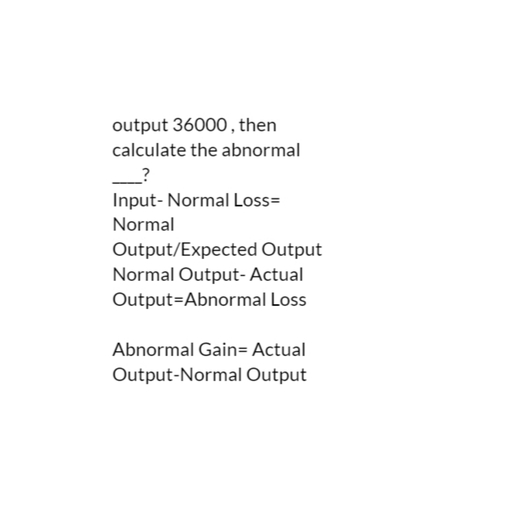Page 2 :
What we are going to learn, , • Distinction between direct and indirect labour, • Time keeping, • Time Booking, • Pay Roll Accounting
Page 3 :
Distinction between Direct and Indirect Labour, Direct Labour/ wages, , Indirect Labour/wages, , Wages paid to the workers who are directly, engaged on production line, , Wages paid to the workers who are engaged, in activities indirectly connected with, production line, , Can be identified easily., , Can not be identified easily., , Only one job department or product gets the, benefits., , Multiple jobs or products get the benefits., , It is part of prime cost., , It is part of factory overheads., , Direct labour makes physical changes in the, product., , Indirect labour does not make physical, changes in the product.
Page 4 :
Time keeping department: Need, Objectives and, Importance, • need to control the time by a worker, • to ensure discipline, punctuality, • suitable for large scale factory, • accurate recording of each worker’s time, • records opening time, closing time, lunch break, overtime , etc., • accurate and full proof method of recording attendance of day workers, and daily wages workers, , • useful for providing statistical data
Page 6 :
Methods of recording time1. Hand written register- a. Time Book b. Time Register, 2. The Check, Token or Disk Method- simple to operate. Each worker is, given an identification number. This number is engraved on a metal disc., All the tokens are hung on a board at the gate or at the entrance of the, department. The late-comers collect their discs and hand over the same, personally to the time keeper. The discs not removed from the boards, represent the absentee workers. This is economical method. It is suitable, for small factory.
Page 8 :
Methods of recording time•, , 3. Time recording Clock Method- Under this method, the attendance is, marked by a time recording clock on a card. Every worker is allotted a time, card usually for one week duration. These time cards are serially arranged, in a tray at the gate of the factory. On arrival the worker picks up his card, from the tray and inserts the same into the time recording clock which, prints the exact arrival time at the space provided on the card against the, particular day., • 4. The dial time recorder is a machine which records the correct, attendance time of the worker automatically. It has a dial around the clock, with a number of hold (usually about 150), each of which bears a number, corresponding to the identification number of the worker concerned.
Page 11 :
Requisites of a good time keeping system, (i) The system should not allow proxy for another worker., (ii) A responsible officer should be present at the factory gate to have proper, supervision., (iii) Piece rate workers should also record attendance time like time rate workers to, maintain discipline and to ensure proper flow of production,, , (iv)Time of arrival and time of departure should be recorded., (v) Mechanical methods of recording time should be followed., (vi) Late-comers should record late arrivals without any relaxation., (vii) No one should be allowed to go out of the factory without the permission of the, proper authority., (viii) The system should be simple, smooth and quick to avoid unnecessary queuing at, the gate.
Page 12 :
Time Booking, Time booking is a method of recording time spent by a worker on a job, order or process., Time may be booked manually or mechanically. Small organisations book the time, manually, while large organisations book the time mechanically, The main objectives of time booking are:, , (i) To ascertain the cost of work done., (ii) To ensure that the time paid for is properly utilised., (iii) To ascertain and minimise idle time within limit., (iv) To determine the rate of absorption of overhead expenses based on direct labour., (v) To know the efficiency of workers by comparing the actual time taken with the time, allowed for completing a job.
Page 14 :
The following methods are generally used for, time booking, 1. Daily Time Sheet:, , Under this method, each worker is allotted a time sheet to record the, time on each job during a day. The worker is supposed to enter the work, order no a description of work done, the 'quantity produced, and time at, which he starts and at which he finishes.
Page 16 :
2. Weekly Time Sheet:, , • This method of recording time is improvement over the daily time, , sheet since the number of documents to be prepared is considerably, reduced. Time sheets are prepared for a week in place of everyday.
Page 18 :
3. Job Cards, •, , A job card is a card which contains all the details regarding the time spent by a worker, or a group of workers on a particular job. It authorises a worker to carry out the, specified assignment., , •, , Whenever a worker takes up the job, he is given this card and he records the hours, worked on the job., , •, , Generally four different types of job cards are used and these are: (a) Job card for each, job- As the job progress the card moves from worker to worker along with the job. (b), Job card for each worker- This card gives a complete record of the time spent by each, worker on different jobs during a particular period. It also facilitates reconciliation, between the time of attendance and time booked against each job. (c) Combined Time, and Job Card (d) Piece work card, , •, , Sometimes there is discrepancy between the gate time (time keeping) and time, booked (time booking) to different jobs. It is necessary to reconcile.
Page 20 :
Pieceworkers, , • Worker is paid a fixed piece rate for each unit, produced or action performed regardless of time., There is need to keep separate job card for each, job. Time record of piece workers is necessary for, various reasons.
Page 22 :
Casual Workers, , • Worker who works in place of an absent worker is, known as casual worker. Wages paid to them are, treated as overhead expenses. Wages paid by the, foreman or the clerk in the head office.
Page 24 :
OUTWORKERS, , • workers in addition to regular workers. Need to, keep close control on their time. Their, attendance record should be kept. The out work, sheets are to be filled in by them or by the, foreman.
Page 25 :
Pay Roll Accounting, , • It involves preparation of pay roll and pay slip at, periodic intervals. Pay Roll shows: Gross Wages,, Deductions, and Net Wages for each worker. Pay Slip, shows Gross Wages, Deductions, and Net Wages of, individual worker., , • Acts related to pay roll: •Payment of Wages Act 1963, , • Payment of Bonus Act 1965 • The Employees, Provident Funds Act • The Employees’ State, Insurance Act 1948 • The Maternity Benefit Act 1961 •, Payment of Gratuity Act 1972









































































